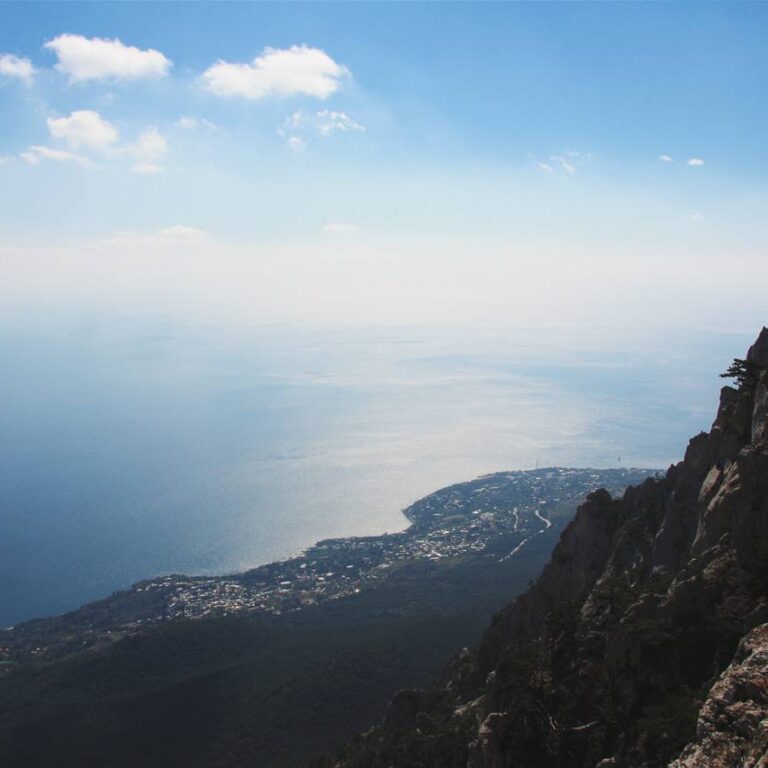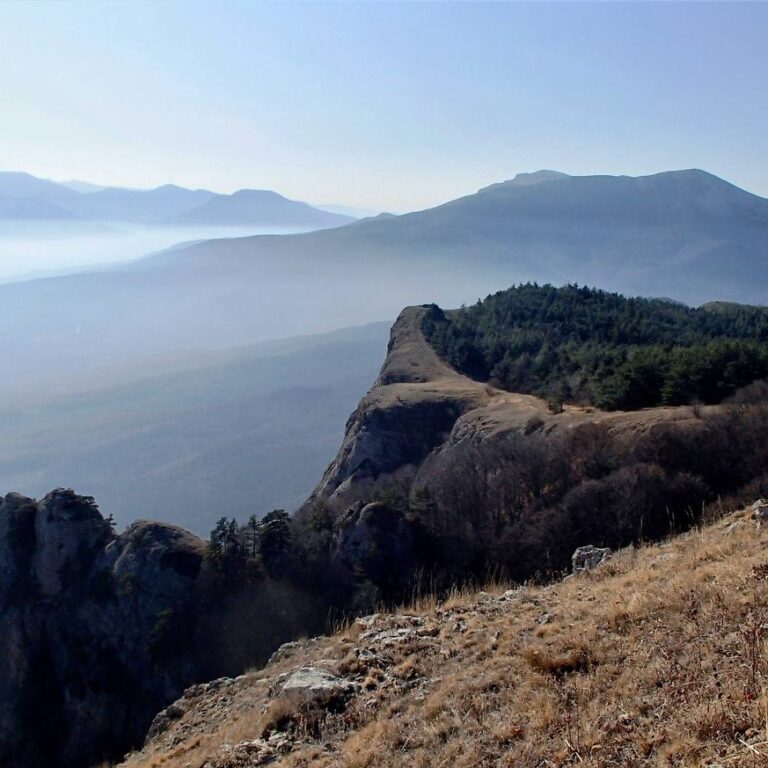The Ukrainian Army is not so far from the Crimea, international efforts to exclude the aggressor state from the United Nations and to establish international tribunals to punish the crime of aggression are ongoing, and the occupiers continue to plan their escape from the occupied peninsula.
Before resorting to a “gesture of goodwill” in Kherson, it is known that Russian troops and occupation criminal “officials” looted the valuables of Kherson museums [1], removed the statues of Suvorov and Ushakov [2], and also mysteriously removed the remains of Prince Potemkin, who had peacefully rested there for nearly a quarter of a millennium [3].
And if the Russian invaders regard “their favorite” historical figures with same contempt, it is difficult to expect them to respect the cultural heritage of other nations. In “Crimean museums”, the first indications of a potential illegal “evacuation” [4]; [5] are already visible, while the unique cultural monuments of the indigenous people, which are difficult or impossible to remove, are being destroyed under the cover of fake “reconstruction” [6]; [7].
Ukraine faces not only the further struggle for de-occupation the Crimea, but also the struggle for the restoration of looted monuments and the recovery of cultural heritage that the occupiers will depart with. So what are the international legal instruments that our nation currently possess for the recovery of its cultural heritage? Oleksiy Plotnikov, PhD and expert in International Law researched this issue.
In a Soviet film, an investigator replied to a perplexed archaeologist: “For you, this object has a unique historical worth, but for thieves, it is merely a piece of gold. They cansaw it, melt it, and even sell it abroad”. He thus crudely but effectively illustrated the distinction between the concepts of cultural property and cultural heritage.
In principle, these two concepts do not contradict each other and are rather complementary; however, the definition of cultural property tends more towards its material significance, which can be measured and has an increased value only for a certain group, whereas the definition of cultural values as cultural heritage is based on the incalculable importance of unique structures, artificial products, and natural monuments as such, and such monuments have an increased value only for a particular group associated [8]; [9].
Definitions of cultural property and cultural heritage differ only in nuances. Thus, according to the Hague Convention on the Protection of Cultural Property in the Event of Armed Conflict, cultural property is considered to be:
a) movable or immovable property of great importance to the cultural heritage of every people, such as monuments of architecture, art or history, whether religious or secular; archaeological sites; groups of buildings which, as a whole, are of historical or artistic interest; works of art; manuscripts, books and other objects of artistic, historical or archaeological interest; as well as scientific collections and important collections of books or archives or of reproductions of the property defined above;
b) buildings whose main and effective purpose is to preserve or exhibit the movable cultural property defined in sub-paragraph (a) such as museums, large libraries and depositories of archives, and refuges intended to shelter, in the event of armed conflict, the movable cultural property defined in sub-paragraph (a);
c) centers containing a large amount of cultural property as defined in sub-paragraphs (a) and (b), to be known as `centers containing monuments’.
Similar definitions are contained in a number of other international treaties aimed at prevention of illegal circulation of cultural values as property. Thus, according to the 1970 Convention on Measures to Prohibit and Prevent the Illegal Import, Export and Transfer of Ownership of Cultural Property, states must prevent the illegal transfer of ownership of cultural property [11]. But such a transfer of ownership can be legal, that is, it can be the subject of business transactions.
The concept of cultural heritage differs from the concept of cultural property in that such heritage is considered in context and has no meaning outside of this context. An individual bas-relief has no meaning without the building in which it is set, an individual book’s value diminishes outside the library where it is stored, a palace loses some of its significance without surrounding landscape.
Thus, according to the UNESCO Convention on the Protection of the World Cultural and Natural Heritage, “cultural heritage” means:
- sights: works of architecture, monumental sculptures and paintings, elements and structures of an archaeological nature, inscriptions, caves and groups of elements that have outstanding universal value from the point of view of history, art or science;
- ensembles: groups of isolated or united buildings whose architecture, unity or connection with the landscape is of outstanding universal value from the point of view of history, art or science;
- outstanding places: works of man or joint works of man and nature, as well as areas, including archaeological sites, which are of universal value from the point of view of history, aesthetics, ethnology or anthropology [12].
The Convention on Cultural Heritage emphasizes the universal significance of such heritage for all mankind, but in Article 6 confirms the sovereign rights of the states where such heritage is located. In addition, the cultural rights of certain groups should be taken into account.
In particular, according to the Declaration of the Rights of Indigenous Peoples, “indigenous peoples have the right to maintain, control, protect and develop their cultural heritage…In conjunction with indigenous peoples, States shall take effective measures to recognize and protect the exercise of these rights” [13].
Thus, with all the importance of cultural heritage for all mankind, it still belongs to the states where it is located and the peoples who created it.
There exist numerous provisions regarding the protection of cultural values and cultural heritage during armed conflicts, but in the Crimean context, the most important are the norms regarding the obligations of states when occupying the territory of other states. Article 53 of the First Additional Protocol to the Geneva Conventions of 1949 prohibits “to commit any acts of hostility directed against the historic monuments, works of art or places of worship which constitute the cultural or spiritual heritage of peoples” [14].
According to the fifth article of the Hague Convention on the Protection of Cultural Property in the Event of Armed Conflict, states must “as far as possible support the competent national authorities of the occupied country in safeguarding and preserving its cultural property”. According to the Second Protocol to the same Convention, the occupying power must prevent any illegal export, removal or transfer of rights to cultural property, as well as any alteration to or change of use of cultural property which is intended to conceal or destroy cultural, historical or scientific evidence [15].
Notably, Ukraine is a member to both the Second Protocol to the Hague Convention on the Protection of Cultural Property and the First Additional Protocol to the Geneva Conventions, although the Russian Federation is not Second Protocol participating state. However, the provisions of the Geneva Conventions and their protocols are part of customary international law, and in any case, according to Article 64 of the Geneva Convention on the Protection of Civilian Persons in Time of War, the occupying power cannot change its criminal legislation during the occupation of Ukrainian territory [16].
The unauthorized appropriation or destruction of cultural heritage objects is forbidden by Articles 193, 201, and 298 of the Criminal Code of Ukraine [17], and the occupying force cannot alter these prohibitions. Therefore, under international law and criminal law, the removal, damage, or destruction of Crimea’s cultural treasures by the occupation remains illegal.
In the same way that occupation can not provide a legal basis for altering sovereign rights to territory, it cannot replace the state that possesses cultural property or cultural heritage. This is unaffected by any change, especially illegal one, in the “legal status of a legal entity” that de-facto operates a particular asset, such as a museum.
Thus, the fact that “Crimean museums” were criminally allegedly “reregistered under Russian law” does not deprive Ukraine of the right to ownership of the assets they preserve, nor does it provide Russian legal entities the ability to transfer such property or heritage. Recently, a Dutch court ruled in the Scythian gold case that this treasure belongs to Ukraine and not to the “Crimean museums” as fake so called “legal entities under Russian law”; ARC wrote about it in detail [18].
It seems unlikely that the Russian occupiers will adhere to international conventions governing cultural assets. When fleeing from Crimea, it is likely that anything of value that can be taken will be taken. Sadly, we must also note that international law has virtually no mechanisms for retrieving illegally transferred cultural property or heritage to their rightful owners.
There is a universal requirement for violators of international obligations to restore the pre-violation state as completely as possible – restitution. The General Assembly of the United Nations issued a number of resolutions regarding the return of cultural values. In a resolution dated 18 December 1973, for instance, the United Nations General Assembly criticized the unfettered removal of cultural artifacts as a result of colonialism or occupation and urged UN member states to return such objects to their nation of origin [19].
In the case of the Preah VihearTemple, the International Court of Justice ordered Thailand to return certain cultural artifacts to Cambodia [20]. However, there are no international mechanisms for the compulsory return of exported cultural values in the relations between the Ukraine and Russia.
How long might the return of cultural values take can be illustrated by the story of the marble from the Parthenon [21]. International law does not provide Greece to return its inheritance, leaving the descendants of the Hellenes with only ineffective political and public pressure.
There are certainly examples of successful voluntary restitution. Germany actively pursues the restoration of cultural artifacts confiscated in Europe under Nazi rule [22] and in Africa during colonialism [23], whilst France and Italy engage in mutual restitution of unlawfully trafficked values [24].
In each of these instances, however, we are discussing the manifestation of the state’s goodwill. In addition, German practice demonstrates that it might be difficult to identify the true owners of stolen cultural property. Taking into account this experience, the restitution of stolen cultural values and heritage should become a condition of the future peace treaty that will be signed after the victory of Ukraine and the regime transition in Russia. Also, this issue should become the subject of consideration by relevant international courts, arbitrations and tribunals.
Sources:
- https://babel.ua/texts/88067-rosiya-rozgrabuvala-muzeji-hersonu-y-vivezla-cinni-eksponati-v-krim-babel-rekonstruyuvav-zlochin-u-diyovih-osobah-i-detalyah-ta-rozkazuye-shcho-robiti-dali
- https://focus.ua/ukraine/534158-rossiyskie-voyska-vyvezli-iz-hersona-pamyatniki-suvorovu-i-ushakovu-foto
- https://www.radiosvoboda.org/a/news-herson-potyomkin-kistky/32101794.html
- https://tsn.ua/ato/u-krimu-pomitili-pershi-oznaki-evakuaciyi-okupantiv-2216194.html
- https://ua.krymr.com/a/krym-viyna-muzei-eksponaty-rosia-vyvezennia/32162634.html
- https://zmina.info/news/okupanty-znyshhyly-stelyu-ta-vitrazhi-v-hanskomu-palaczi-ekspertka-krymskoyi-platformy/
- https://www.pap.pl/ua/news%2C1510397%2Cmzs-ukraini-rosiyani-nischat-tatarski-pamyatniki-v-okupovanomu-krimu.html
- https://theblueshield.org/defining-cultural-heritage-and-cultural-property/
- http://dspace.onua.edu.ua/bitstream/handle/11300/7457/Koval_The%20Definition%20of%20Cultural%20Property.pdf?sequence=1&isAllowed=y
- https://www.icrc.org/ru/doc/resources/documents/misc/treaties-cultural-properties-140554.htm
- https://zakon.rada.gov.ua/laws/show/5396-11#Text
- https://zakon.rada.gov.ua/laws/show/995_089#Text
- https://zakon.rada.gov.ua/laws/show/995_l56#Text
- https://zakon.rada.gov.ua/laws/show/995_199#Text
- https://zakon.rada.gov.ua/laws/show/995_001-99#Text
- https://zakon.rada.gov.ua/laws/show/995_154#Text
- https://zakon.rada.gov.ua/laws/show/2341-14#Text
- https://arc.construction/21905?lang=ua
- https://digitallibrary.un.org/record/190996
- https://www.icj-cij.org/en/case/45
- http://prostir.museum/ua/post/33914
- https://www.anthropology-news.org/articles/museums-and-the-restitution-of-cultural-property/
- https://www.theafricareport.com/186230/germany-is-making-an-effort-to-return-artefacts-of-african-heritage/
- https://www.unesco.org/en/articles/cross-restitution-between-france-and-italy-importance-bilateral-relations-fight-against-illicit







